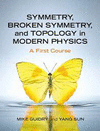issue contents
March 2024 issue

Cover illustration: In this issue, Billinge & Proffen [Acta Cryst. (2024), A80, 139–145] introduce a virtual collection of articles from various IUCr journals illustrating the application of artificial intelligence and machine learning in structural science. The cover image was generated by DALL·E using the prompt `A depiction of molecules surrounded by abstract representations of digital data and AI algorithms, highlighting the historical improvements in the data-driven approach to crystallography'.
editorial

advances
research papers
 access
accessfoundations
research papers
 access
access access
access access
access access
access access
accessinternational union of crystallography

book reviews


 journal menu
journal menu































